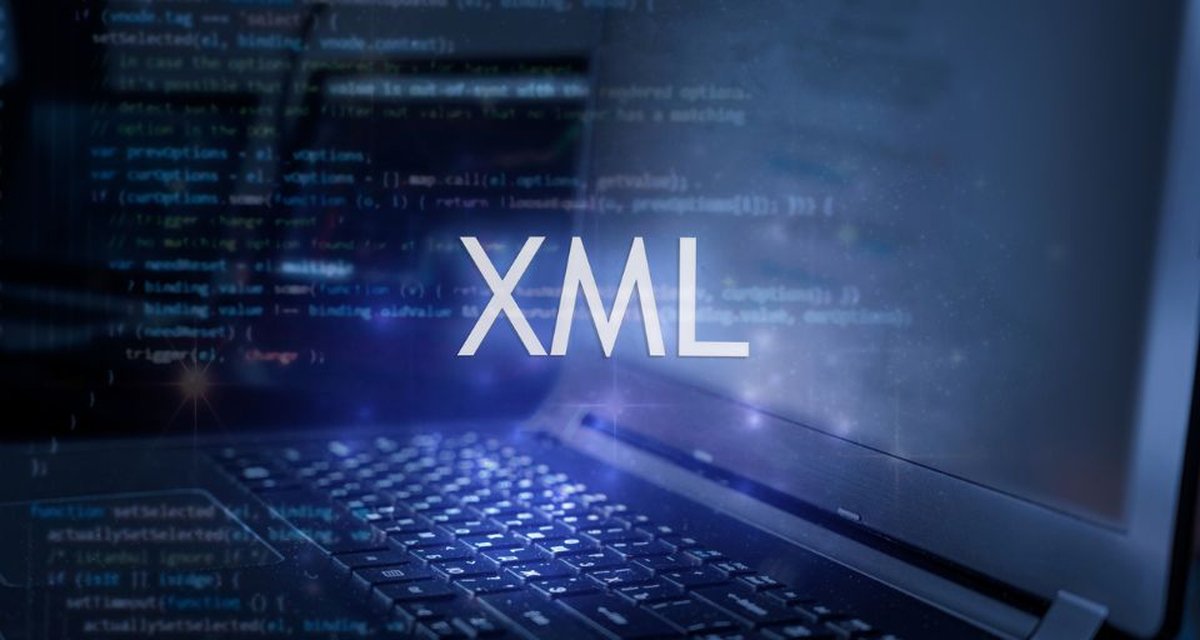XML is a Markup language widely used to exchange data between systems. Acts as a powerful tool Representing structured information in a flexible and organized way.
Since its introduction by the W3C in 1998, XML has become a fundamental part in many scenarios, from web applications to the integration of enterprise systems.
What is XML?
XML or Extensible Markup Language, is a markup language that defines a set of rules for encoding documents in a human- and machine-readable way.
Unlike other languages such as HTML, which have a set of predefined tags, XML is “extensible.” This means you can create your own tags and data structures according to the needs of the project.
In this sense, the main function of XML is to describe data in a structured way. This makes it especially useful for exchanging information between different systems such as databases, APIs, and even storing configuration information.
As a widely adopted language, XML integrates well with other technologies and platforms.
How does this markup language work?
XML uses a tag system similar to HTML, but has the advantage of allowing users to create their own tags.
Every XML document has a hierarchical structure. It starts with a single root tag that encompasses all the others. Additionally, tags can contain attributes and values that allow detailed and complex representation of information.
For example, an XML file describing a list of books contains elements such as “books”, “book”, “title”, “author”, and “year”. This helps structure and organize data in a way that can be understood by both humans and the systems that process that data.
What are the benefits of using XML?
XML has many advantages that make it a popular choice for exchanging information. Among the main ones we can highlight:
- Simplicity and flexibility: XML is easy to understand and adopt. It can be used to represent any type of data and is extremely flexible as it allows personalized labels to be created according to the user’s needs;
- Standardization: Since XML follows well-defined standards by W3C, it can be used on different platforms and ensure compatibility between systems;
- Human and machine readability: The XML document can be read by both humans and machines, making it easier to manipulate and process;
- Platform Independence: Because XML is a text format, it can be used on any operating system or development platform;
- Broad Support: the XML is supported by a wide variety of tools, programming languages, and technologies such as Java, .NET, Python, among others.
What are the main updates to XML?
XML has undergone some updates and improvements since its release, but the core specification has remained relatively constant. Some of the important developments include:
Namespaces (1999)
This update allowed different tag sets were used in the same XML documentPrevents name conflicts between different XML schemas.
XML Schema (2001)
XML Schema is a language used to define the structure and content of XML documents. It offers greater rigor and precision than the previously used DTD (Document Type Definition).
XPath and XSLT
These vehicles were introduced in the early 2000s. Allow navigation and conversion of XML documents – efficiently.
XPath is used to navigate through XML elements and attributes, while XSLT is a transformation language that can convert XML documents to other formats.
What are the components of an XML file?
An XML file consists of different elements that help structure the data. The main components are:

- XML Declaration: specifies the XML version and encoding type of the document;
- Root Tag: Every XML document must have a root tag that encapsulates all other elements;
- Items: Labels that contain data. Elements can have attributes and children;
- Qualifications: additional information within tags used to describe properties of items;
- Comments: It allows you to add notes to the XML document that are ignored by processing systems.
What is the difference between XML and HTML?
Although XML and HTML are markup languages, their purposes are quite different. HTML (HyperText Markup Language) is designed to define the structure and presentation of web pages.XML is used to describe data in a structured way.
We can also highlight the following points as some of the main differences between the languages:
- Defined and Undefined Tags can be extended: HTML has a fixed set of tags (like “h1”, “p”, “div”), while XML allows you to create your own tags;
- Flexibility: XML is more flexible as it can be used to represent data in different scenarios; HTML, on the other hand, is more limited to the layout and structure of web pages;
- Tight structure: In XML, all elements must be well-formed, meaning opening and closing tags must be compatible. In HTML, some tags like “img” or “br” may not be closed.
How to create XML?
Creating XML files can be done in a variety of ways depending on your needs. Some tools and programming languages offer built-in libraries for creating XML documents programmatically. There are libraries that make creating XML easier in languages such as Python, Java and PHP.
Also many text editors, IDEs (like Visual Studio Code, Sublime Text) and even database and spreadsheet software (like Microsoft Excel)allow data to be exported in XML format.
We hope this content helped you understand a little more about XML. Also take the opportunity to learn about courses for those who want to enter the field of programming. Until next time!
****
Article updated by Douglas Vieira on 30.10.2024.
Source: Tec Mundo
I am a passionate and hardworking journalist with an eye for detail. I specialize in the field of news reporting, and have been writing for Gadget Onus, a renowned online news site, since 2019. As the author of their Hot News section, I’m proud to be at the forefront of today’s headlines and current affairs.











